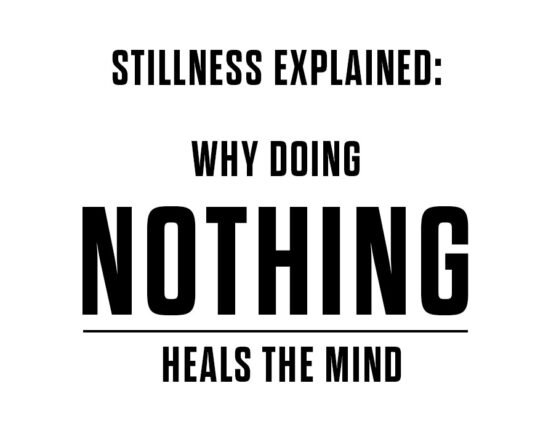Understanding Worry: Definition and Context
Worry: It’s something we all know, a fundamental human experience. Yet, when it becomes relentless, a constant focus on potential negative outcomes, it can spiral. While a touch of worry can certainly sharpen our awareness and get us ready for what’s ahead, too much often leads to a debilitating state: anticipatory anxiety. This isn’t just mild concern; it’s heightened anxiety, an overwhelming preoccupation with future possibilities, triggering fear and kicking off a cycle of distress. Think about it: that intense fear about an upcoming exam might, ironically, actually hinder your performance instead of genuinely boosting your preparation (Mona, 2021). It’s a paradox many unfortunately face.
Anticipatory anxiety, sometimes called “worry about worry,” centres on threats that exist mostly in our minds, not in current reality. It can show up situationally, tied to a specific event, or it might be chronic, sticking around no matter what’s happening externally. Sure, most of us experience mild, everyday worry, which is a normal part of navigating life. But when these worries go unchecked, they frequently push us toward avoidance behaviours. And that, sadly, only deepens the underlying problem (Feldman, 2022), creating a self-perpetuating loop that’s tough to break.
From an evolutionary standpoint, a certain amount of worry was a real survival advantage. It allowed for quick responses to immediate dangers. Yet, in the complexities of modern life, this built-in mechanism can backfire, actively disrupting our daily routines and overall well-being (Anxiety Disorders, 2025). So, really getting to grips with worry’s true nature and context becomes vital for recognising its profound impact on mental health.
Worry’s Far Reach in Modern Life

Worry has become an undeniable part of contemporary existence, touching people from all walks of life and across diverse circumstances. While a fleeting worry is a perfectly normal reaction—even prompting necessary preparation for upcoming challenges—chronic worry has, with increasing alarm, transformed into a significant public health concern. The National Institute of Mental Health (NIMH) reports that anxiety disorders consistently rank among the most commonly diagnosed mental health issues in the United States.
We’re talking about millions affected each year (Anxiety Disorders – (NIMH), 2025). Generalized Anxiety Disorder (GAD) offers a prime example, marked by a persistent, uncontrollable preoccupation with everyday matters, everything from health worries and financial stability to complex family relationships (Generalized Anxiety Disorder (GAD), 2024).
Data suggests that over 3% of U.S. adults actively grapple with GAD, solidifying its place as one of the most prevalent anxiety disorders (Anxiety Disorders, 2025). In our fast-paced world, a mix of factors like the constant flood of social media, economic uncertainties, and ongoing global crises has intensified anxious feelings for many. This continuous stream of information often culminates in heightened anxiety, fostering a widespread expectation of negative outcomes.
Such a prolonged state of anxiety doesn’t just chip away at your mental well-being; it’s also directly linked to various physical health problems, including debilitating insomnia and troublesome gastrointestinal disorders. Therefore, understanding just how widespread worry is in today’s society stands as a crucial first step toward effectively tackling its multifaceted impacts, both for individuals and for the broader community.
The Brain’s Role in Worry: A Neuroscience Perspective
The Default Mode Network: Its Surprising Role in Anticipatory Anxiety
The default mode network (DMN) plays a pivotal, and often surprising, role in anticipatory anxiety. This is that distinct type of worry focused on uncertain future events. Neuroscientific research consistently shows the DMN lights up when we’re thinking about ourselves or engaging in what’s called “mental time travel” which is a process that frequently leads to deep rumination on past experiences or, more commonly, obsessive thoughts about future possibilities. What’s particularly noteworthy is that dysregulation within the DMN is a common feature seen in generalized anxiety disorder (GAD), directly fueling the chronic worrying that defines this condition (Yuan et al., 2023).
Increased DMN activity can significantly ramp up anticipatory anxiety by boosting an individual’s inherent sensitivity to perceived threats. This heightened state of vigilance can easily push you into debilitating cycles of negative thought, intensifying feelings of dread and a pervasive sense of unease. Furthermore, studies firmly link heightened DMN activity to classic symptoms like restlessness and irritability in those diagnosed with anxiety disorders (Default Mode Network | Psychology Today, 2025).

Individuals caught in the grip of anticipatory anxiety often find themselves endlessly trapped in “what if” scenarios. The DMN, in these moments, intensely zeroes in on every conceivable negative outcome (ada.org). This internal dialogue, often happening with no external triggers, only magnifies discomfort and can, critically, lead to a paralyzing inability to make decisions.
Neurotransmitters: The Brain’s Chemical Conductors of Mood and Anxiety
Neurotransmitters, those vital chemical messengers in the brain, play incredibly important roles in regulating mood and anxiety. They directly influence both anticipatory anxiety and ongoing chronic worry. Serotonin, for example, is especially key for emotional regulation; imbalances in its intricate levels can directly worsen anxiety symptoms. This biological connection helps explain why healthcare providers often prescribe Selective Serotonin Reuptake Inhibitors (SSRIs)—they work by increasing serotonin availability in the brain, frequently offering effective relief from various anxiety disorders (Bragdon, 2024).
Gamma Aminobutyric Acid (GABA), known as the brain’s primary inhibitory neurotransmitter, actively manages anxiety by promoting relaxation and effectively reducing excessive neuronal excitability. Problems within the delicate GABAergic system can directly lead to heightened anxiety, making GABA a crucial target for therapeutic interventions, such as benzodiazepines, which are designed to amplify its calming effects.
Norepinephrine also plays a significant, well-documented role in acute stress responses, particularly those involving fear; increased activity in its neural pathways is strongly tied to panic symptoms and anticipatory anxiety. Beyond that, dopamine’s critical involvement in reward processing suggests that any disruption in its system can noticeably impact motivation and contribute to the pervasive avoidance behaviors often seen in individuals experiencing chronic worry.
A deeper grasp of these vital neurotransmitters offers critical insights into the complex biological foundations of anxiety disorders. It also, concurrently, guides the development of more targeted and effective therapeutic strategies.
Cognitive Psychology’s Take on Worry
Maladaptive Thinking Patterns and Their Consequences
Dysfunctional thinking styles wield a substantial, often underestimated, influence on how chronic worry and anticipatory anxiety persist. These deeply ingrained thought processes frequently show up as incessant, negative ruminations that amplify fears about potential future scenarios. You might find yourself caught in a web of “what if” questions, conjuring the most dreadful imaginable outcomes without any realistic basis for such deep concerns. This widespread tendency toward catastrophic thinking can severely distort your perception of risk, ultimately resulting in a profound and debilitating sense of powerlessness (Mona, 2021).
Common cognitive distortions, like sweeping overgeneralization or an overly selective focus on negatives, frequently intensify these unhelpful thought patterns. For instance, someone might exclusively fixate on past negative incidents while completely ignoring any positive experiences, leading to the rigid conclusion that all future events are inevitably doomed (Team, 2021). This skewed mindset doesn’t just amplify existing anxiety; it also significantly disrupts daily functioning. Affected individuals may consistently shy away from situations that trigger their anxieties, inadvertently solidifying their deep-seated apprehensions (Anxiety Disorders, 2025).
What’s more, neuroscientific studies suggest that chronic worry actively triggers specific brain areas linked to threat detection, most notably the amygdala (Understanding anticipatory anxiety during key life transitions, 2025). As you become deeply entrenched in these obsessive thought patterns, you unknowingly reinforce neural pathways directly connected to anxiety and stress reactions. Consequently, far from preparing you to handle uncertainty, this maladaptive cognitive style ultimately traps you in an ever-deepening cycle of worry.
The Cycle of Worry and Avoidance Behaviors
Worry operates within a self-perpetuating cycle that systematically escalates anxiety, often culminating in pronounced avoidance behaviors. This insidious process typically kicks off with anticipatory anxiety, where you fixate intently on the potential negative outcomes of future events. Imagine, for example, someone anxious about giving a presentation who might vividly picture a barrage of worst-case scenarios, thereby intensely escalating their distress. Chronic worry is frequently fueled by deeply ingrained maladaptive beliefs, leading individuals to mistakenly assume that the very act of worrying somehow prepares them for challenges (Sugiura, 2004).
As worry intensifies, it inevitably leads to concrete avoidance behaviors. This could mean consciously evading social gatherings, putting off important tasks, or declining public speaking engagements. Such deliberate actions, in turn, reinforce the entire worry cycle. Rather than confronting their fears and actively disproving anxious thoughts, individuals retreat further into a state of pervasive unease.

This pattern often includes a “third layer” of fear, where you not only dread facing your fears themselves but also the anticipated physical and emotional reactions you expect to experience (Understanding anticipatory anxiety during key life transitions, 2025). While avoidance offers immediate, albeit temporary, relief from distress, it ultimately perpetuates anxiety in the long term, making true resolution elusive.
Cognitive behavioral therapy (CBT) centrally emphasizes breaking this detrimental cycle. It does so through carefully structured exposure to feared situations, helping individuals to ultimately realize that their worries are often unfounded and disproportionate to the actual threat.
Evolutionary Theories of Anxiety
Worrying: An Ancient Survival Mechanism
Worrying, a highly developed psychological trait, has played a significant role in human survival for thousands of years. Unlike instinctual fear responses—those immediate, automatic jolts triggered by present danger—worry represents a more nuanced, cognitively sophisticated emotional state. This state allowed our ancestors to foresee and proactively prepare for potential dangers that weren’t immediately obvious.
Such anticipatory anxiety proved absolutely essential in ancient environments where threats weren’t always in plain sight, fostering a crucial proactive stance toward managing risks. The evolutionary roots of this complex behavior can be traced back to times when early humans navigated increasingly intricate social interactions; as communities grew beyond simple family units, the ability to skillfully move through complex social terrains became paramount for both collective and individual survival.
Studies also suggest that worry acts as a powerful cognitive mechanism. It demonstrably improves decision-making under uncertain conditions. By carefully visualizing future scenarios and their possible repercussions, people could devise more effective strategies to lessen risks. For example, concerns about impending resource scarcity might drive more efficient gathering of supplies or actively encourage greater collaboration within a group—behaviors that significantly boosted both personal and collective chances of survival (Mermelstein, 2022; Bateson et al., 2011, pages 1-5).
Furthermore, the complex interplay between anxiety and social regulation has been recognized as inherently beneficial, capable of fostering unity and loyalty among group members (Mermelstein, 2022). So, while excessive worrying can certainly lead to debilitating anxiety disorders in contemporary life, its fundamental role as an adaptive mechanism truly highlights its enduring importance throughout human evolution.
Anticipatory Anxiety as an Evolutionary Adaptation
Anticipatory anxiety stands as a clear testament to evolutionary design, meticulously crafted to enhance survival by preparing individuals for potential future threats. Unlike immediate, instinctive fear, anticipatory anxiety involves complex cognitive processes that allow you to carefully evaluate uncertain risks long before they actually appear. This advanced ability proved absolutely critical for early humans.
Navigating unpredictable environments, it supported not only individual survival but also forged vital group cohesion through shared concerns and collaborative strategies. As Mermelstein (2022) noted, the evolutionary progression from basic fear responses to this intricate anxiety framework significantly contributed to the development of robust social bonds and intergroup loyalty throughout human history.
Beyond its foundational role in social dynamics, anticipatory anxiety actively encourages proactive behaviors such as meticulous planning and thorough risk assessment. It inherently motivates you to adopt precautionary measures, thereby tangibly boosting your chances of thriving in potentially dangerous situations. Understanding this profound adaptation illuminates why many people experience mild anxiety in their daily lives; it critically highlights the constructive aspects of worry when channeled positively and appropriately.
Chronic Worry and Clinical Anxiety Disorders
Linking Chronic Worry to Clinical Anxiety Disorders
Persistent and pervasive anxiety significantly contributes to the development of clinical anxiety disorders, most notably Generalized Anxiety Disorder (GAD). GAD is fundamentally characterized by an excessive and widespread preoccupation with daily concerns, ranging across health, financial stability, and interpersonal relationships. Individuals experiencing GAD typically struggle immensely to manage these worries, leading to considerable personal distress and significant disruption in their daily lives. The DSM-5 outlines specific diagnostic criteria for GAD, which include the presence of sustained anxiety for a period of at least six months and the exhibition of associated physical symptoms such as restlessness or persistent sleep difficulties (Munir & Takov, 2022).
Chronic worry isn’t just a fleeting symptom; it serves as a central, defining feature of GAD. What’s more, it has the demonstrable capacity to trigger or worsen other concurrent anxiety disorders. Studies reveal that you, with GAD, frequently interpret ambiguous situations negatively—a cognitive bias that consistently intensifies your worry responses (Yuan et al., 2023).
This pervasive pattern heightens the risk of co-occurring conditions, such as major depression or panic disorder, which, in turn, complicates effective clinical treatment (Generalized Anxiety Disorder (GAD), 2024). Consequently, addressing excessive worrying behaviors is a crucial and foundational component in comprehensive treatment strategies, with cognitive behavioral therapy (CBT) specifically targeting these unhelpful thought patterns to alleviate chronic worry.
Case Studies: Real-Life Examples of Chronic Worrying
Chronic worry shows up in diverse and often debilitating ways across individual experiences, painting a vivid picture of its impact. Take, for instance, a middle-aged woman whose mind is relentlessly consumed with concerns for her family’s safety. She obsessively imagines accidents or health crises, even though there’s a complete absence of any substantial basis for such profound fears. This persistent focus on potential threats prevents her from truly engaging in family gatherings and, tragically, fosters deep feelings of loneliness and isolation.
In another compelling case, a young professional finds himself utterly overwhelmed by persistent thoughts regarding his job performance and the ever-present, imagined risk of layoffs. Despite consistently receiving positive evaluations, he struggles relentlessly to dislodge the pervasive belief that he will ultimately fail which is a belief that paradoxically leads to heightened anxiety and significantly reduced productivity at work.
Furthermore, picture a college student who experiences intense anticipatory anxiety specifically related to social situations. She dreads attending parties or participating in collaborative presentations, fearing ridicule or harsh negative judgment from her peers. This pervasive anxiety has progressively escalated into debilitating avoidance behaviors, directly resulting in missed opportunities for crucial social interactions and a profoundly negative impact on her overall mental well-being.
Research consistently indicates that chronic worry tends to perpetuate itself through deeply entrenched, harmful thought patterns, which actively maintain or even worsen anxiety symptoms over time (Fletcher, 2013; Munir & Takov, 2022). These powerful examples vividly illustrate just how deeply ingrained chronic worrying can become and its significant, far-reaching detrimental impact on daily functioning.
Therapeutic Approaches for Managing Worry

Cognitive Behavioral Therapy (CBT) Techniques for Reducing Worry
Cognitive Behavioral Therapy (CBT) systematically zeroes in on altering the specific thought and behavior patterns that actively contribute to anxiety and persistent worry. A cornerstone method within CBT is cognitive restructuring, which actively helps you confront and then modify the unproductive thought patterns that fuel your anxiety.
While you may not always control your initial fears, you can demonstrably learn to effectively manage your responses to them. CBT critically highlights that worrying doesn’t actually protect you; instead, it relentlessly reinforces negative thought cycles, thereby incrementally increasing anxiety over time (Anxiety Disorders, 2025). This is a stark, crucial distinction to grasp.
Mindfulness techniques are also skillfully woven into CBT, particularly for generalized anxiety disorder (GAD). These practices foster present-moment awareness, crucially enabling you to detach from intrusive negative thoughts. This approach actively encourages a nonjudgmental view of worries, effectively countering catastrophic thinking and its powerful grip (Joshua E. Curtiss et al., 2021). Techniques such as imaginal exposure allow patients to safely envision worst-case scenarios within a controlled therapeutic environment, thereby empowering them to gradually face and ultimately overcome their fears.
Therapy sessions typically span 12-16 weeks, a period carefully designed to ensure accountability and consistent progress. Follow-up sessions are readily available to effectively reinforce sustained improvements (Generalized Anxiety Disorder: What You Need to Know – National, 2025). These comprehensive CBT techniques equip individuals with invaluable, practical tools to effectively manage worry and significantly enhance their emotional resilience when facing life’s challenges.
Mindfulness Practices to Cultivate Present Moment Awareness
Mindfulness techniques serve as powerful and increasingly recognized tools for significantly boosting present-moment awareness and effectively reducing chronic worry and anxiety. Meditation, in particular, helps individuals consciously focus their attention on the “here and now,” calming racing thoughts and actively promoting emotional regulation. Deep breathing exercises further support this process by grounding you firmly in the present moment and effectively alleviating the physiological symptoms often associated with anxiety.

Yoga seamlessly integrates physical movement with mindfulness principles, actively encouraging relaxation through various poses that specifically target physical tension commonly linked to anxiety. Additionally, mindfulness practices can be thoughtfully tailored to foster self-compassion and acceptance, promoting a kinder relationship with oneself.
Techniques such as detached mindfulness empower you to observe your worries objectively, as if they were clouds passing by—a process that can significantly reduce excessive worrying and its hold (Sugiura, 2004).
These practices offer not only immediate relief from acute distress but also contribute to building lasting emotional resilience. They achieve this by strengthening neural pathways directly associated with healthier coping strategies and more adaptive emotional processing (Understanding anticipatory anxiety during key life transitions, 2025).
Conclusion
Anxiety frequently manifests as a complex psychological response to perceived threats, especially through the lens of anticipatory anxiety. This specific form arises when individuals habitually project fears onto future situations, leading to ingrained patterns of negative thinking and subsequent avoidance behaviors. It can create a profound and unsettling sense of impending doom, simultaneously heightening one’s awareness of surroundings and prompting a strong inclination to avoid distressing scenarios. As noted in (ada.org), this type of anxiety functions much like an internal alarm system, yet paradoxically, it may inadvertently result in maladaptive fears, such as the deeply unsettling fear of the experience of fear itself.
Chronic worry involves persistent, uncontrollable thoughts that endure even when no immediate external threats exist. These thoughts often impact critical life areas, including health, relationships, and financial stability (Fletcher, 2013). You can become deeply trapped in endless “what if” scenarios, intensely escalating your feelings of dread and helplessness. This pervasive behaviour may also signify underlying mental health issues, such as generalized anxiety disorder (GAD), where excessive worry becomes a significant and pervasive aspect of daily life—almost a constant companion (Joshua E. Curtiss et al., 2021).
Understanding these various, multifaceted aspects of worry is fundamentally crucial for developing effective coping strategies. This understanding emphasizes the critical necessity of addressing both the specific content of worry and the underlying mechanisms driving it, through established cognitive behavioral techniques and mindful awareness practices.
Future Directions for Research and Practice in Addressing Chronic Worrying
As the field of psychology continues its ongoing advancement, future research into chronic worry and anticipatory anxiety should actively explore a deeper integration of mindfulness strategies across diverse therapeutic approaches. Mindfulness-based cognitive therapy (MBCT) and acceptance and commitment therapy (ACT) have already shown considerable promise in effectively addressing emotional disorders.
They achieve this by empowering individuals to observe their thoughts without becoming excessively entangled or reactive, thereby directly disrupting detrimental patterns of worry (Anxiety Disorders, 2025). Moreover, adopting transdiagnostic approaches that focus on underlying mechanisms common to various anxiety disorders may significantly enhance overall treatment efficacy.
The Unified Protocol for Transdiagnostic Treatment notably combines mindfulness techniques with cognitive flexibility and emotion regulation strategies, allowing for highly personalized interventions meticulously tailored to individual requirements (Joshua E. Curtiss et al., 2021). This bespoke approach promises greater resonance with patients.
Additionally, forthcoming studies might thoroughly investigate the precise role of detached mindfulness as a metacognitive tool for alleviating worry. This could involve examining how it explicitly improves problem-solving abilities and effectively reduces negative assessments related to stressors (Sugiura, 2004). Finally, the advanced analysis of neuroimaging techniques holds profound potential for providing deeper insights into how mindfulness specifically affects brain activity linked to cognitive control, thereby paving the way for more targeted and ultimately more effective interventions explicitly aimed at decreasing chronic worry symptoms (Woolston & Gupta, 2025). The path ahead appears promising for those seeking relief.
Frequently Asked Questions
1. Why do I keep worrying even when nothing bad is happening?
Your brain’s default mode network often activates during idle moments, triggering mental “time travel” into imagined future threats. This can create anticipatory anxiety, making you feel on edge even without real danger present, leading to a cycle of intrusive worry and fear.
2. Is worrying ever helpful, or is it always harmful?
In moderation, worry can be adaptive, helping you prepare for challenges and assess risks. However, chronic worry is harmful, reinforcing anxiety and avoidance behaviors that reduce life satisfaction and can impair health, sleep, and decision-making over time.
3. What causes chronic worry to become an anxiety disorder?
When worry becomes excessive, uncontrollable, and lasts for six months or more disrupting daily life & it may indicate Generalized Anxiety Disorder (GAD). It’s often driven by negative thought patterns and brain chemistry imbalances, especially in serotonin and GABA systems.
4. Why do I avoid things that make me anxious, even if they’re important?
Avoidance provides temporary relief, but it reinforces the belief that feared situations are dangerous. Over time, this worry-avoidance cycle intensifies anxiety and shrinks your comfort zone, making everyday activities feel increasingly overwhelming and harder to face.
5. What treatments are available to help reduce constant worrying?
Cognitive Behavioral Therapy (CBT) and mindfulness practices are highly effective. CBT helps reframe unhelpful thought patterns, while mindfulness builds awareness and calm. These therapies train your brain to disengage from intrusive thoughts and break the cycle of chronic worry.
References +
- Feldman.Barry;. (2022). “Wait to worry” and other ways to cope with anticipatory anxiety. https://www.dvm360.com/view/-wait-to-worry-and-other-ways-to-cope-with-anticipatory-anxiety
- Anxiety Disorders. (2025). https://www.netce.com/coursecontent.php?courseid=3058
- Joshua E. Curtiss. Ph.D., Daniella S. Levine. B.A., Ilana Ander. B.A., Amanda W. Baker. Ph.D.. (2021). Cognitive-Behavioral Treatments for Anxiety and Stress-Related Disorders. https://psychiatryonline.org/doi/full/10.1176/appi.focus.20200045
- Laura Bragdon. (2024). Neuroscience and Psychiatry: Open Access. https://www.openaccessjournals.com/articles/the-neurobiology-of-anxiety-disorders-18222.html
- Anticipatory Anxiety: Bleeding Before You Are Cut | Anxiety and. (2025). https://adaa.org/learn-from-us/from-the-experts/blog-posts/consumer/anticipatory-anxiety-bleeding-you-are-cut-0
- Sadaf Munir, Veronica Takov. (2022). Generalized Anxiety Disorder. https://www.ncbi.nlm.nih.gov/books/NBK441870/
- Breanna Mona. (2021). How to Manage Anticipatory Anxiety. https://psychcentral.com/anxiety/what-is-anticipatory-anxiety
- Headspace Editorial Team. (2021). How to stop worrying. https://www.headspace.com/articles/how-to-stop-worrying
- Anxiety Disorders – National Institute of Mental Health (NIMH). (2025). https://www.nimh.nih.gov/health/topics/anxiety-disorders
- Jenna Fletcher. (2013). Chronic Worrying: Signs, Causes, and Treatment | Psych Central. https://psychcentral.com/blog/how-to-stop-worrying-about-worrying
- Jeffrey J Mermelstein. (2022). The Evolutionary Roots of Anxiety and its Implications for Socialization and Group Cohesion. http://www.fortunejournals.com/articles/the-evolutionary-roots-of-anxiety-and-its-implications-for-socialization-and-group-cohesion.html
- Melissa Bateson. DPhil, Ben Brilot. PhD, Daniel Nettle. PhD. (2011). Anxiety: An Evolutionary Approach. https://journals.sagepub.com/doi/pdf/10.1177/070674371105601202
- Chris Woolston, Resh Gupta. (2025). Can mindfulness combat anxiety?. https://source.washu.edu/2025/05/can-mindfulness-combat-anxiety/
- Default Mode Network | Psychology Today. (2025). https://www.psychologytoday.com/us/basics/default-mode-network
- Generalized Anxiety Disorder (GAD). (2024). https://www.hopkinsmedicine.org/health/conditions-and-diseases/generalized-anxiety-disorder
- Understanding anticipatory anxiety during key life transitions. (2025). https://www.apa.org/monitor/2025/06/anticipatory-anxiety
- Yoshinori Sugiura. (2004). Detached mindfulness and worry: a meta-cognitive analysis. https://www.sciencedirect.com/science/article/abs/pii/S0191886903003386
- Minlan Yuan, Bo Liu, Biao Yang, Wen Dang, Hua Xie, Su Lui, Changjian Qiu, Hongru Zhu, Wei Zhang. (2023). Dysfunction of default mode network characterizes generalized anxiety disorder relative to social anxiety disorder and post-traumatic stress disorder. https://www.sciencedirect.com/science/article/pii/S0165032723005840
- Generalized Anxiety Disorder: What You Need to Know – National . (2025). https://www.nimh.nih.gov/health/publications/generalized-anxiety-disorder-gad













Leave feedback about this